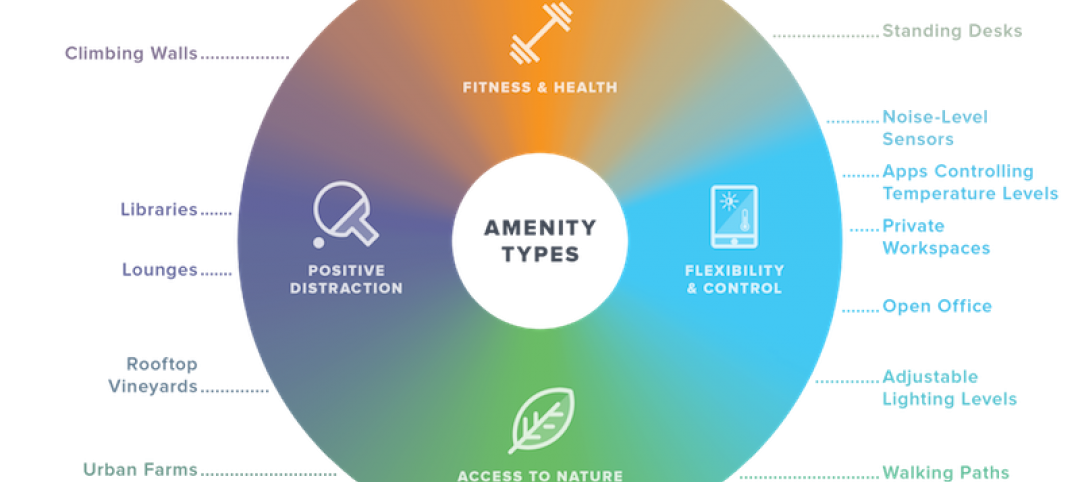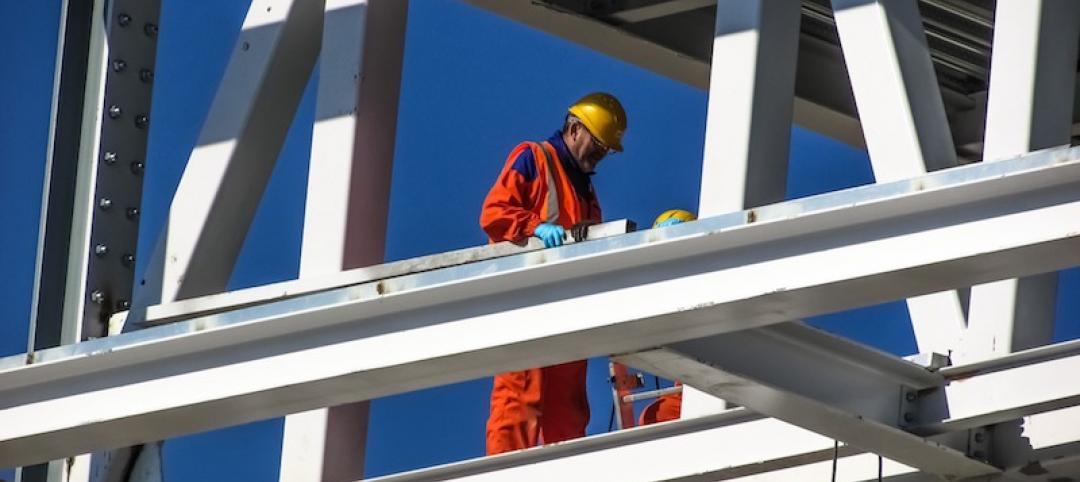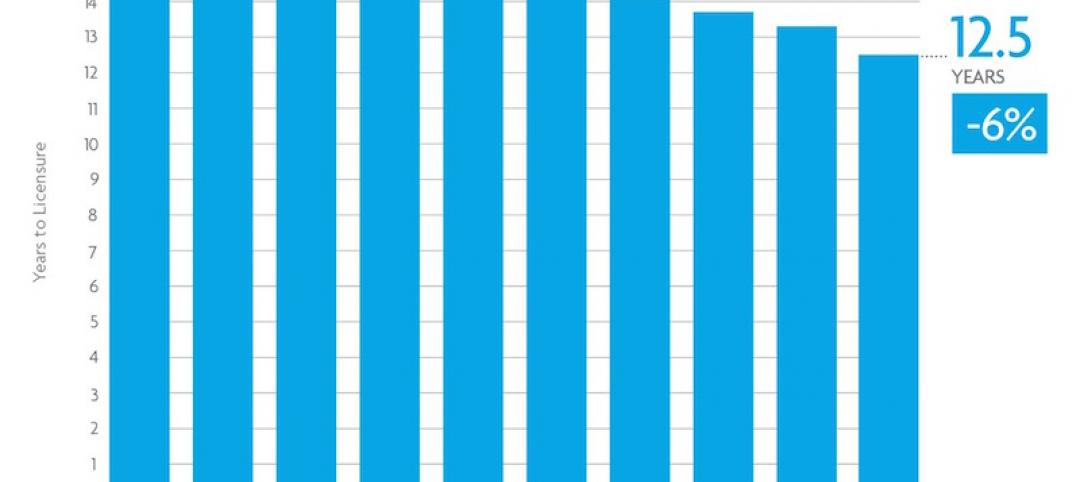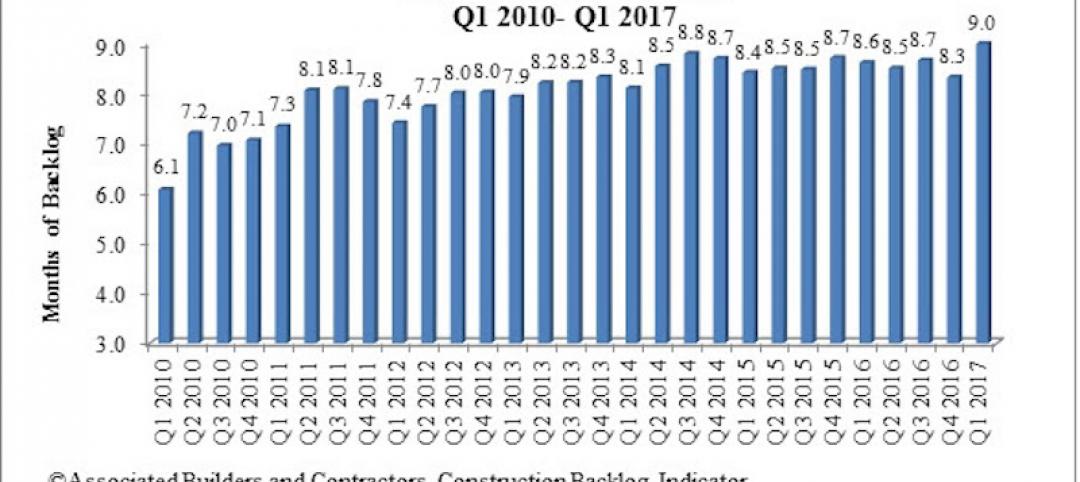Nonresidential construction spending fell to a two-year low in March as contractors struggled with slumping demand for most project types and growing shortages of materials, transport, and workers, according to an analysis of new federal construction spending data by the Associated General Contractors of America. Officials with the association said project cancellations and widespread supply chain problems are hindering the industry’s recovery.
“Every major category of private nonresidential projects has declined over the past year, while public construction spending is also deteriorating rapidly,” said Ken Simonson, the association’s chief economist. “Unfortunately, the widespread and growing backlogs for key materials and shortages of trucking and rail services to deliver goods mean that even projects that are underway are likely to take longer to complete.”
Construction spending in March totaled $1.51 trillion at a seasonally adjusted annual rate, an increase of 0.8% from the pace in February and 5.3% higher than in March 2020. However, the year-over-year gain was limited to residential construction, Simonson noted. That segment jumped 1.7% for the month and 23% year-over-year. Meanwhile, combined private and public nonresidential spending declined 1.1% from February—the fourth consecutive monthly decrease—and 7.4% over 12 months.
Private nonresidential construction spending fell 0.9% from February to March and 9.1% since March 2020, with year-over-year decreases in all 11 subsegments. The largest private nonresidential category, power construction, retreated 8.3% year-over-year and 0.4% from February to March. Among the other large private nonresidential project types, commercial construction—comprising retail, warehouse and farm structures—slumped 8.8% year-over-year and 0.5% for the month. Manufacturing construction tumbled 7.8% from a year earlier and 1.3% in March. Office construction decreased 4.2% year-over-year and 0.4% in March.
Public construction spending slumped 4.6% year-over-year and 1.5% for the month. Among the largest segments, highway and street construction declined 10.9% from a year earlier and 2.2% for the month, while educational construction decreased 4.0% year-over-year and 2.0% in March. Spending on transportation facilities declined 0.9% over 12 months but rose 1.8% in March.
Association officials urged Congress and the Biden administration to work together to increase investments in infrastructure. And they continued to call on the President to take steps to address rapidly rising materials prices, including by ending tariffs on key construction materials like steel and lumber. They cautioned that without the new investments and supply chain relief, the industry would have a hard time recovering.
“Federal officials are pushing for an economic recovery while at the same time hanging on to dated policies, like tariffs, that are holding growth back,” said Stephen E. Sandherr, the association’s chief executive officer. “Boosting infrastructure investments and tackling supply chain problems will go a long way in unleashing demand for new construction workers.”
Related Stories
Market Data | Aug 2, 2017
Nonresidential Construction Spending falls in June, driven by public sector
June’s weak construction spending report can be largely attributed to the public sector.
Market Data | Jul 31, 2017
U.S. economic growth accelerates in second quarter; Nonresidential fixed investment maintains momentum
Nonresidential fixed investment, a category of GDP embodying nonresidential construction activity, expanded at a 5.2% seasonally adjusted annual rate.
Multifamily Housing | Jul 27, 2017
Apartment market index: Business conditions soften, but still solid
Despite some softness at the high end of the apartment market, demand for apartments will continue to be substantial for years to come, according to the National Multifamily Housing Council.
Market Data | Jul 25, 2017
What's your employer value proposition?
Hiring and retaining talent is one of the top challenges faced by most professional services firms.
Market Data | Jul 25, 2017
Moderating economic growth triggers construction forecast downgrade for 2017 and 2018
Prospects for the construction industry have weakened with developments over the first half of the year.
Industry Research | Jul 6, 2017
The four types of strategic real estate amenities
From swimming pools to pirate ships, amenities (even crazy ones) aren’t just perks, but assets to enhance performance.
Market Data | Jun 29, 2017
Silicon Valley, Long Island among the priciest places for office fitouts
Coming out on top as the most expensive market to build out an office is Silicon Valley, Calif., with an out-of-pocket cost of $199.22.
Market Data | Jun 26, 2017
Construction disputes were slightly less contentious last year
But poorly written and administered contracts are still problems, says latest Arcadis report.
Industry Research | Jun 26, 2017
Time to earn an architecture license continues to drop
This trend is driven by candidates completing the experience and examination programs concurrently and more quickly.
Industry Research | Jun 22, 2017
ABC's Construction Backlog Indicator rebounds in 2017
The first quarter showed gains in all categories.
















